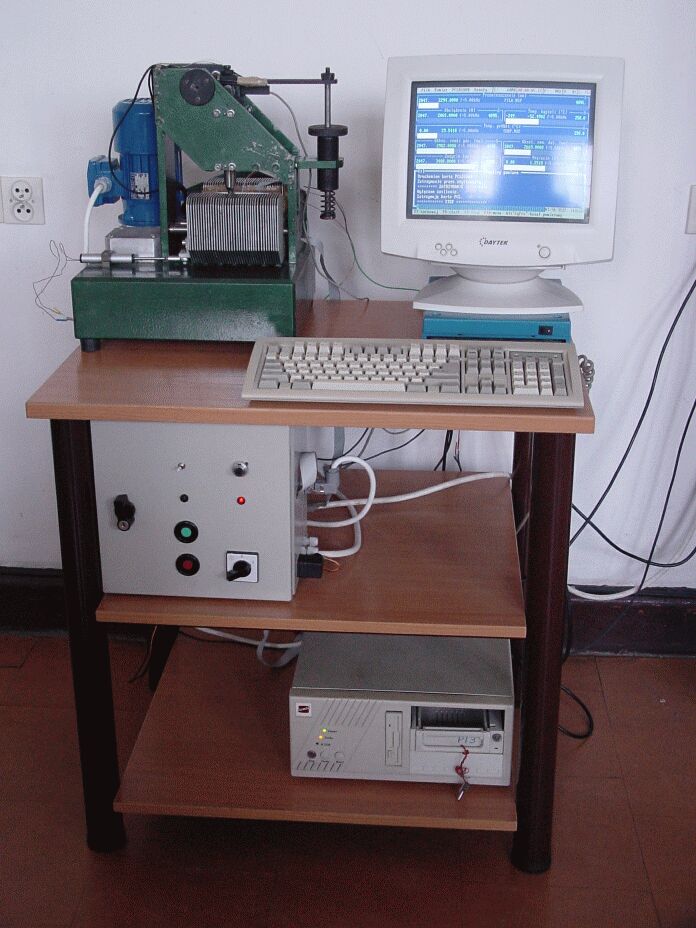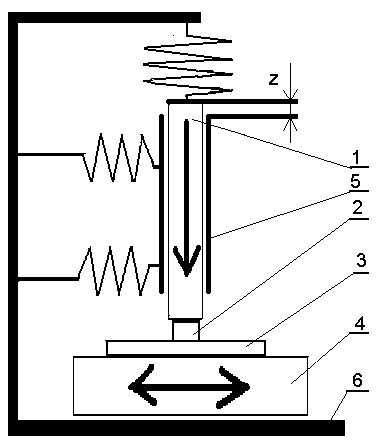Machine Design and Vehicles Department
TPZ
TPZ - tribometer of reciprocating sliding
Tribometer TPZ - is dedicated for studying the lubricated or dry sliding friction under regulated agitating factors and for different stiffnesses of passive specimen supporting system and loading system. The upper specimen (2) is passive; It is fitted at the lower end of a push-rod (1) supported in linear roller bearings mounted in housing (5) attached through springs to the tribometer frame (6). The springs are rectangular frames which are a few orders of magnitude stiffer in the vertical direction than horizontal. Various replacement frames allow for dynamics changes of the test set-up. Load is exerted either by tensioning the spring or by weights acting via a flexible lever on the push-rod.
Lower specimen (3) is attached to a reciprocating slider (4), which is supported on linear roller bearings and frame (6). An AC motor, powered from an AC frequency inverter, drives a rotating crank through a belt transmission. The crank drives the slider. The use of the freuqency inverter allows for computerised velocity adjustment. Slider displacement is measured with linear resistor and supplied to computer as a feedback signal Programmable velocity changes, low minimum velocity and changeable dynamics of the test set-up make the rig a useful tool for friction dynamics research. The slider is equipped with semi-conductor temperature stabilizers, heating or cooling specimens by Peltier effect. Heat is transferred through ribs with forced convection. Specimens and/or lubricant temperatures are measured with thermocouples.
Friction (upper specimen displacement) is measured with strain gauges on the elastic frames supporting the push rod housing (5). Wear of both specimens is measured in real time as a vertical displacement ("z") of push-rod (1).
Schematic view (click sketch to enlarge):
Photo of test head:

Specifications:
- Mximum load: 1000 N
- Sliding velocity range: 0.01 - 0.5 m/s
- Slider stroke: 40 mm
- Temperature: 50 °C relative to ambient temperature
- Recommended dimensions of upper specimen intersection: 5 x 2 mm
Measured or calculated quantities:
- Linear wear of both specimens
- Temperature of specimens and/or lubricant
- Friction force
- Displacement of upper specimen (vertical and horizontal)
Examples of the research:
- Research on friction and wear of materials operating under reciprocating sliding eg. for pistons, piston rings and cylinders of combustion engines
- Lubricant performance testing under reciprocating sliding friction conditions
Contact person:
- Krzysztof Druet
- send e-mail
- Jacek I. Łubiński
- send e-mail
- Jurek Gliwiński
- send e-mail



